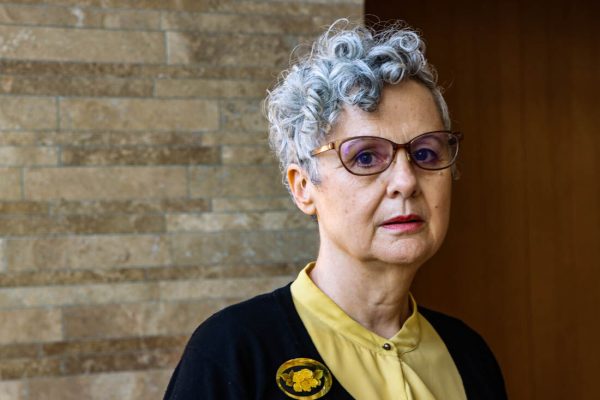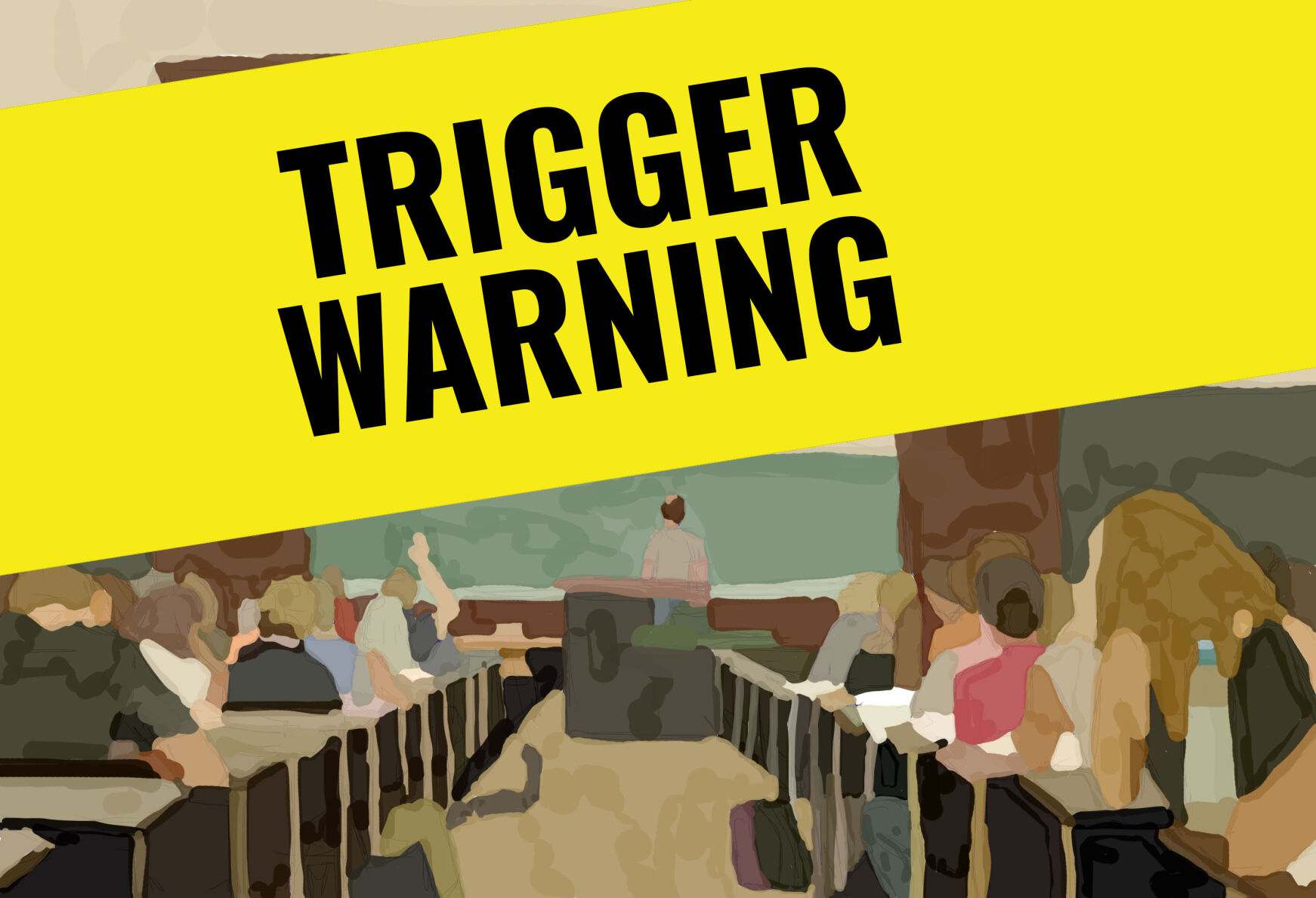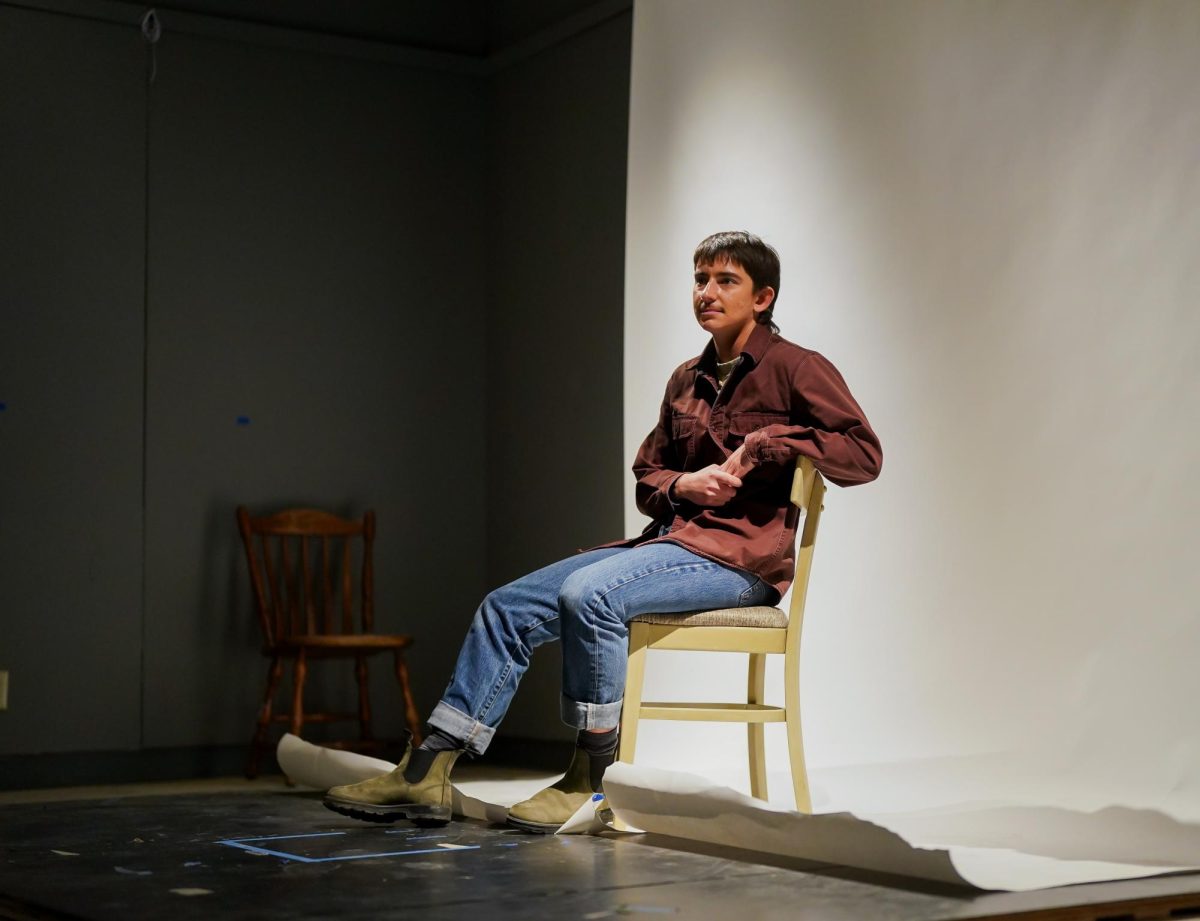When UO freshman Addie Kosterman registered for her spring classes, she was excited to take a philosophy course on love and sexuality. Yet even as the term began and class kicked off, Kosterman had no idea the course would eventually include explicit discussions of sexual assault and rape.
“I think there should have been a much clearer trigger warning presented during that first week,” Kosterman said. “It’s just such a touchy subject, and a lot of people come to the table bringing their own different experiences. But now it’s like week four, week five, and it’s not like you can go and drop the course.”
Kosterman isn’t alone in her concerns. In recent years, students have increasingly requested that trigger warnings become a staple of their curriculum; a 2016 NPR Survey found that just over half of professors nationwide had obliged.
Defined by Scientific American as “statements that warn of a negative emotional response to potentially distressing stimuli,” trigger warnings were initially introduced to the classroom as an accommodation for students experiencing post-traumatic stress disorder. However, they eventually became a major source of controversy and academic discussion, particularly in response to a 2013 Oberlin College policy that encouraged instructors to avoid potentially triggering content.
“Part of the challenge with talking about content and trigger warnings is that the research is relatively mixed,” Laurel Bastian, a faculty consultant with UO’s Teaching Engagement Program, said. “Some of the research says that there might even be a slight increase in anxiety levels when students see trigger warnings.”
The data on trigger warnings is not without its share of caveats. Bastian said researchers are still learning about their effects on the students they were originally intended for, such as those with mental health disorders like PTSD. Although the evidence on trigger warnings is inconclusive, they are increasing in popularity — with a growing number of students saying they need them.

The pros and cons of trigger warnings
While some professors advocate for the universal use of trigger warnings as a means of ensuring accessibility, others warn of their potential to stifle uncomfortable, but important, academic conversations.
For Betsy Wheeler, a UO professor of English and disability studies, trigger warnings are unquestionably linked to promoting accessibility in the classroom.
“I find them to be an essential feature of universal design in learning,” Wheeler said. “I feel they are commonly misunderstood as coddling students, or treating students as if they are breakable or little snowflakes or something.”
Wheeler noted that trigger warnings are designed to make classes more accessible for students who experience trauma responses, including PTSD or flashbacks. Likewise, students with marginalized identities — including women, students of color, trans and non-binary students, low-income students and disabled students — are more likely to be triggered as a result of the systemic oppression they face.

Kosterman, the freshman student, said trigger warnings and trauma-informed accommodations should be a right for students at the university, regardless of their use in other spaces.
“I understand the argument ‘oh, the real world’s not like that, you don’t get a trigger warning,’” Kosterman said. “But this is a class you’re taking at a school you pay for. You should know what you’re walking in for and how to be prepared for it.”
Bastian said, in addition to students, faculty can be triggered or disrupted by certain material and might need additional support.
“I think that most of us –– students, faculty, everyone –– have experienced in some way over the last two years what kind of toll on us, from health, emotional, financial, what kind of toll that can take on our ability to learn, our ability to be productive and present with our colleagues,” Bastian said.
Other professors expressed concerns that —when applied broadly — trigger warnings might stifle discussion on certain important topics.
Anita Chari, a UO professor of political science, said that while calling attention to sensitive or triggering content is important, it shouldn’t come at the expense of grappling with uncomfortable material.
“The fact of the matter is, we are always dealing with content that’s activating and difficult –– especially in the social sciences, but not exclusively,” Chari said. “If our goal is to have transformative conversations, what would we be talking about that has any relevance, if not the pressing issues of our time? Even if those issues might be disturbing?”
Some instructors are wary of trigger warnings and their potential relation to “safe spaces,” defined by Merriam-Webster as environments “intended to be free of bias, conflict, criticism, or potentially threatening actions, ideas, or conversations.” Jose Cortez, a UO professor of English and Latinx studies, said he believes safe spaces are not suitable for classroom learning, though they may have a place in other campus environments.
“I see safe spaces as places where we agree to disagree, try not to take things personally, and there’s the option to opt out of challenges that make us uncomfortable,” Cortez said. “I encourage my students to think about the classroom as a ‘brave space,’ where we can have difficult conversations — and yes, learn through materials that can be triggering — in a kind of classroom environment built on trust and vulnerability.”
Bastian said there are many common misconceptions about trigger warnings, including what purpose they serve and to what extent they ask professors to regulate their content. Her characterization of trigger warnings and their ideal purpose was much narrower.
“It’s not something that would necessarily change what someone would teach. It’s not trying to avoid discomfort for students –– discomfort is a part of learning,” Bastian said. “We’re talking about being able to flag particular types of content that particularly relate to the experiences of violence or subjugation that different people, like those with PTSD, might experience.”
The use of trigger warnings
How faculty view the purpose of trigger warnings and trauma-informed teaching approaches influences their overall approach to potential traumatic responses and experiences in the classroom.
Chari said calling attention to sensitive material via trigger warnings should be only one part of a broader educational response to trauma and difficult conversations.
“My approach is really not just about warning people, but about giving them the tools to expand their bandwidth for what we in trauma-informed work call the ‘window of tolerance,’” Chari said. “For being able to sit with the discomfort that arises in being with that material.”

Cortez said he always tells his students ahead of time that he generally does not provide content-based accommodations like allowing students to opt out of certain materials. Instead, he hopes to promote debate and diversity of opinion in his classroom in respectful ways.
“It’s difficult to have conversations with people you disagree with, but I think that’s the beauty of having a university education,” Cortez said. “And, you know, if you do choose to opt out of specific conversations, ask questions about that. There is something to be learned about that kind of hesitation, if you interrogate that. It can be rich with information.”
Cortez said students can always talk to him about course content and if his course is right for them.
In the syllabus for her disability studies class, Wheeler has a trigger warning entitled “Responding Productively to Discomfort,” which provides an opportunity to reflect on why material might be found disturbing or triggering.
“It talks about trigger warnings and self-care when experiencing a disturbance,” Wheeler said. “But then it gets into, what did you learn from this thing that troubled you? What is your social position in relationship to it? Are you a principal target, an ally, a bystander? Are you complicit? And how can you synthesize all these things?”
Wheeler also offers detailed trigger warnings on her syllabi, with options to opt out of certain triggering content. She typically provides overarching warnings for certain themes in readings and discussions, as well as specific page numbers in many cases.
For Bastian, the question of trigger warnings is ultimately about giving students agency to make their own informed decisions.
“I’ll be frank: part of what comes up on this issue that makes me uncomfortable is saying that ‘it’s not necessarily good for our students to avoid this thing, they should get used to certain triggers,’” Bastian said. “That’s not our business as instructors. We want to simply give them a little more information so that they can do what they know is most useful to their learning.”

Toward a trauma-informed pedagogy
In response to conversations like these, some faculty are seeking to establish a trauma-informed pedagogy; a set of teaching and learning methods that are sensitive to difficult material and students’ lived experiences, while also providing space for open dialogue and honest conversation.
Chari is a co-founder of Embodying Your Curriculum, a faculty training program that emphasizes the importance of trauma-informed pedagogy in the classroom. Among other things, the program hopes to “cultivate a learning environment where students feel safe and heard.” Chari said programs like these are essential in a polarized and divided political environment, where professors are often called upon to facilitate intense conversations.
Wheeler said the best approach to difficult material in the classroom is to work in collaboration with students. She said she asks them what makes a good learning environment for them and discloses her own disabilities and accommodations, which help create an environment of trust and respect.
“I have fibromyalgia. I have a hard time moving physical things, and I use a high chair in class so I can see everybody’s face while not having to stand,” Wheeler said. “And almost every time, a student has moved that chair up to the front of the class before I get there. That feeling that I can do this for them, and they can do this for me, has opened up the conversation.”
Bastian said there are a wide variety of trauma-informed, wellness-centered approaches to learning that instructors can take, including making time for students to talk to each other in small groups, checking in with students who seem to be struggling and normalizing asking for help.
For Chari, conversations like these are essential to ensuring best educational practices, now more than ever.
“I don’t think there’s a discipline right now that doesn’t have some relationship to questions of how we create space for discomfort and accountability, and productive, transformative conflict,” Chari said. “I think it’s central to what it means to do education.”
Chari said there doesn’t have to be a tension between trigger warnings and expanded dialogue in the classroom.
“We have a lot of debates about free and open speech on campuses these days, because they come into conflict with the idea of holding safe space, ostensibly. I absolutely disagree with that,” Chari said. “No space is absolutely safe, right, but if you pay attention and learn the tools of regulation and teaching people to notice their own discomfort and how it arises in these certain ways, then what you do is create a space with more diversity of opinion, and more safety of expression.”
“I think one of the biggest misconceptions about trauma-informed pedagogy, student well-being, is somehow akin to asking faculty to provide therapy, or do something outside of the role of an educator,” Bastian said. “But actually it’s all about what design choices we can make that will help students do that kind of self-regulation for themselves.”
As part of her work with the Teaching Engagement Program, Bastian created a set of best practices for faculty practicing trauma-informed pedagogy via the Student Wellbeing Toolkit. Notably, the toolkit says nothing on the subject of trigger warnings.






